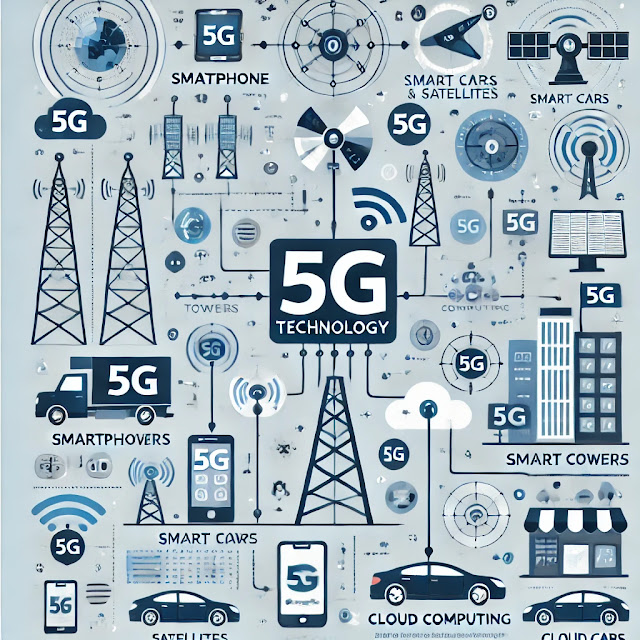What is 5g technology?
5G (Fifth Generation Mobile Network) is the latest standard in mobile communications, developed to meet the growing demands for faster, more reliable, and more efficient wireless connectivity. Defined by 3GPP under the IMT-2020 framework by the International Telecommunication Union (ITU), 5G introduces a wide array of new technologies that surpass the capabilities of its predecessors, including 4G LTE.
5G aims to deliver enhanced mobile broadband (eMBB), ultra-reliable low-latency communication (URLLC), and massive machine-type communications (mMTC). This trifecta supports applications ranging from high-definition video streaming and immersive virtual reality to autonomous vehicles and large-scale IoT deployments.
2. Low Latency: Response time can be as low as 1 millisecond (compared to 30–50 ms in 4G), which is crucial for real-time applications like autonomous vehicles and remote surgery. With latency as low as 1 millisecond, 5G allows real-time responsiveness. This is essential for critical applications like autonomous vehicles, remote surgery, and robotic control in industry.
3. Massive Connectivity: Supports up to 1 million connected devices per square kilometer, making it ideal for the Internet of Things (IoT). 5G can connect millions of devices per square kilometer, enabling large-scale smart city infrastructure, industrial IoT, smart homes, and wearables.
4. Improved Reliability: Provides more stable connections, especially in crowded areas. 5G networks are more reliable and energy-efficient, allowing for longer device battery life and stable performance even in densely populated areas.
5. Energy Efficiency: Designed to consume less power, helping devices last longer.
How 5G Technology Works – Technical
5G works by combining advanced wireless technologies, higher-frequency spectrum, and intelligent network design to deliver ultra-fast, low-latency, and high-capacity communication. Here’s a breakdown of how it functions:
1. Use of Higher Frequency Bands
- 5G New Radio (NR) operates on:
- Sub-6 GHz bands (low and mid bands): Wider coverage, moderate speeds.
- Millimeter Wave (mmWave) bands (24–100 GHz): Extremely fast speeds, short range.
- These bands allow wider channel bandwidths (up to 400 MHz), enabling much higher data throughput than 4G.
2. Small Cell Deployment
- Due to the shorter range of mmWave, 5G relies on dense deployment of small cells (mini base stations).
- Small cells are installed on lampposts, buildings, and street furniture to maintain strong, localized signals.
3. Massive MIMO (Multiple Input, Multiple Output)
- 5G uses arrays of antennas (dozens to hundreds) at base stations to transmit and receive signals simultaneously.
- Improves capacity, coverage, and spectral efficiency.
4. Beamforming
- Instead of broadcasting signals in all directions, beamforming directs signals toward specific users or devices.
- Reduces interference and increases efficiency and signal quality.
5. Network Slicing
- 5G networks can be "sliced" into multiple virtual networks, each tailored for specific use cases:
- e.g., one slice for IoT (low data, many devices), another for autonomous driving (ultra-low latency).
6. Edge Computing Integration
- 5G integrates with Multi-Access Edge Computing (MEC) to process data near the user rather than at a distant data center.
- Reduces latency and offloads data from the core network.
7. Standalone vs. Non-Standalone Modes
- NSA (Non-Standalone): 5G works with existing 4G LTE infrastructure.
- SA (Standalone): Uses a dedicated 5G core (5GC) for full features like slicing, ultra-low latency, and dynamic spectrum sharing.













0 Comments